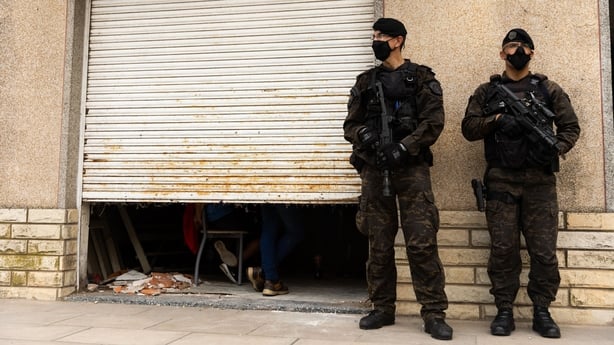Argentine police have seized vast quantities of cocaine likely laced with opioids and made several arrests after 22 people died and dozens were poisoned in Buenos Aires.
Officials said the incident, which highlighted the dangers of illegal drug use, had been brought under control - but recent buyers of cocaine in and around the capital city were nevertheless urged to throw it away.
"It could have been a worse tragedy," said provincial government official Carlos Bianco, had officials not seized "a large quantity" of cocaine after the mass hospitalisation event and taken it off the streets.
Provincial health minister Nicolas Kreplak said 20,000 doses of the adulterated substance were confiscated from the area of Buenos Aires where it had been sold.
Health authorities issued an "epidemiological alert" on Wednesday after a spate of deaths in three western suburbs of Buenos Aires among people who had taken what they thought was cocaine.
More than 80 were admitted to ten hospitals, some in critical condition, and 20 remained on mechanical ventilation yesterday.
Police arrested three members of a drug gang in the suburb of San Martin accused of having distributed the drug mix.
In front of the nearby Bocalandro Hospital, a mother waited for updates on her 28-year-old son.
"He's a good son ... but he's addicted. I don't know how to help him," she said.
Buenos Aires provincial security chief Sergio Berni said the lethal additive, still being analysed, was likely an opioid as many of the patients had reacted well to treatment for opioid poisoning.
Beatriz Mercado, who lives in the suburb of Hurlingham, told AFP she had found her 31-year-old son lying on the kitchen floor in the dark.
"He was almost not breathing, his eyes were rolling back," she said. She took him to the hospital, where he was put on life support.
"I hope for a miracle," said Mercado.

Some of the victims, several of them men in their 30s and 40s, suffered violent convulsions and heart attacks.
The alarm was first raised when four people arrived at a hospital together, saying they had taken cocaine at the same event. All four died.
"We are desperate, we want to know why one person is dying after another here," Maria Morales told AFP outside the hospital where her brother-in-law was on life support.
A friend who had taken cocaine at the same gathering is dead.
At a house in the precarious suburb of Tres de Febrero, where the drug was allegedly sold, police found packets of the substance similar to those described by the victims' families.
Mr Berni told the Telefe channel the as-yet unknown additive was "attacking the central nervous system" of users.
"Every dealer that buys cocaine cuts it. Some do it with non-toxic substances such as starch. Others put hallucinogens in it, and if there is no form of control, this kind of thing happens," Mr Berni said.
He said the adulteration was unlikely the result of gang warfare, adding that a lab mix-up was the more probable cause.
San Martin public prosecutor Marcelo Lapargo said what happened was "absolutely exceptional" and there was "no precedent" in Argentina.
The priority, he added, was "to communicate so that those who are in possession of this poison know that they should not consume it."
Mr Berni said that in Buenos Aires province, home to some 40% of the Argentine population of 45 million and with high poverty rates, about 250,000 doses of cocaine are sold daily.
Illegal drug use has been on the rise in Argentina. In the mid-1980s, half a tonne of cocaine was seized every year - a decade later it was four times that, official data showed.
In 2017, a record 12.1 tonnes of cocaine were seized in the country, but in 2020, the number fell to about 2.7 tonnes as consumption dropped during the pandemic.

